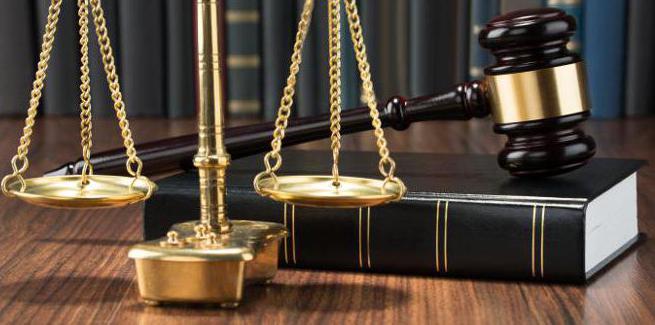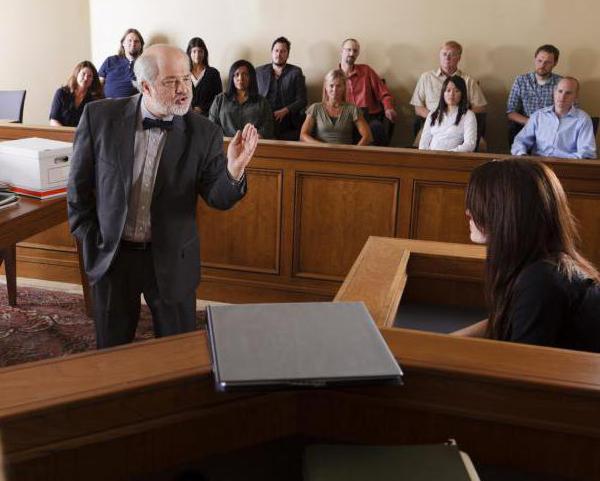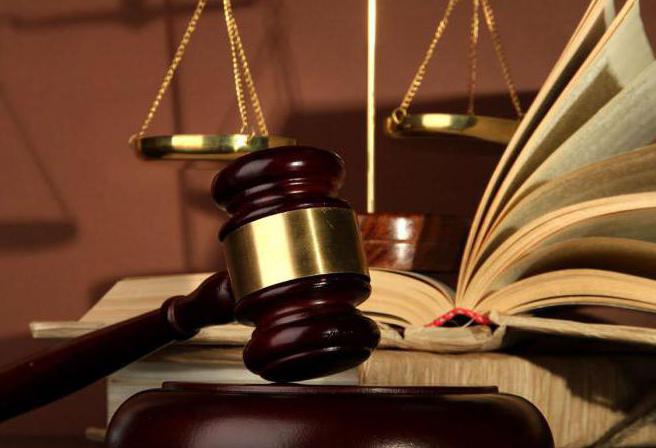What is a verdict of not guilty? This is a procedural act of a court, which means that a citizen is not guilty of committing the crime of which he was charged. In this case, a person must be fully rehabilitated and restored in all rights. An acquittal may be issued by a court of first instance or appeal, as well as when the case was sent for review due to newly discovered circumstances.

Definition
What is a acquittal and in what cases can it be decided by a court? This issue is of interest to many citizens, and especially those people who have already visited the bench of the accused.
An acquittal is a procedural act issued by a court after examining all the materials of the case and the evidence presented, if in the process the citizen’s guilt has not found its confirmation. Although in practice this happens quite rarely. Most often, a criminal case brought to court ends with a conviction. To cancel this act subsequently is almost impossible.
The notion of sentence means the court makes a final decision on the case. A person is found guilty and sentenced to a certain punishment or justified and restored in all rights.

Grounds for pronouncement
Spelled out in the Code of Criminal Procedure of the Russian Federation. The grounds for the court to make an acquittal decision are the following circumstances:
- there was no fact of the crime;
- lack of corpus delicti in the actions of the accused;
- adoption by jury of a verdict that acquits the defendant;
- it is revealed that the accused is not related to the committed act.
Justification of a person according to any one of these items not only entails exemption from liability and punishment, but also implies the rehabilitation of a person and restoration of his full rights.
Important
Only one court verdict may be imposed. In the event that a person was accused of several atrocities, then the decision should indicate on which points he was acquitted.
There was no crime
In this case, we are talking about those cases when a criminal case is instituted due to the fact that there is a fact of the commission of an atrocity, but in fact it is absent. In other words, the presence of the crime event was not confirmed during the trial, and therefore the defendant was acquitted.
For example:
Passers-by accidentally discovered a person in the forest in an unconscious state, in addition, he had some injuries to his head and face, and blood appeared. People called the police. The wounded man was taken to a hospital in critical condition and spent two months in a coma.
At this point, police officers opened a case on the fact of causing serious injuries and began the search for the perpetrator. The victim's friend was the first to be suspected, with whom they were together in the forest. But he explained that he and a friend had a falling out and went home. The suspect did not see him again. However, the police did not believe this.
Only in court from the testimony of the victim himself it became known that he was in the forest alone, at the time of a strong wind a tree branch fell on him, and he lost consciousness. There were also other witnesses who confirmed that the defendant was at home at that moment. As a result, the court acquitted the accused, because there was no crime event.The injured person was injured due to force majeure.

There is no crime
Any crime is characterized by the presence of certain signs. Therefore, in order for the court verdict to become guilty, the investigation must collect compelling evidence of the guilt of the alleged attacker.
The composition of the crime always has four components:
- subject (a person who has reached the age prescribed by law to bring him to justice, he must be sane);
- the object is what the crime is aimed at (social relations that have been harmed);
- subjective side - determines the degree of guilt of the offender and his attitude to the crime;
- objective side - means the method, time and place of the crime (if this is not proven, then the person will be acquitted).
It follows that if one of the signs of a crime is not established during the course of the proceedings, then the court does not convict the person.
Case study
Moving on the road at night in his vehicle, the young man allowed a collision with a man who accidentally ran out onto the roadway. As a result of the accident, serious bodily injuries were caused to the citizen. Police officers opened a case on the fact that the driver of the car hit a person. During the investigation, all evidence was collected, allegedly confirming the fault of the motorist. The case was referred to court.
During the course of the trial, it was established that the foot participant in the movement, in a state of intoxication, ran out onto the road in front of the car specifically for the purpose of committing suicide. He confirmed this when he regained consciousness. This was a quarrel with a girl. Fortunately for the driver, the latter survived.
Thus, the court passed a verdict of not guilty for the driver, because no crime was found in his actions.
Not involved
In practice, it often happens that law enforcement officers detain the wrong person who committed the crime. In this case, the suspect must seek the assistance of a lawyer and try to prove his innocence using all methods not prohibited for this established by law. Nevertheless, with a good investigation, such cases often go to court, and people get real terms of imprisonment. Therefore, the defender of the alleged attacker must make every effort to ensure that the court concludes that the accused is not guilty of the crime.
Example
While drinking alcohol, one citizen stabbed another in the abdomen with a knife. After the latter stopped breathing, the attacker fled. After some time, the victim’s wife returned from the dacha, she opened the door with her key and entered the apartment. Seeing her husband lying on the floor in blood, she tried to extract the instrument of crime from him, while she left her imprints on the knife. Then the woman called the police and an ambulance. The man died in the hospital without regaining consciousness. His wife was the only suspect. The case was brought to court. After all, it is practically impossible to prove that a person is not guilty if there are fingerprints on the crime instrument.
During the meeting, all the circumstances of the atrocity were established, witnesses were questioned. In addition, the accused’s lawyer provided a video from the covert surveillance camera while she was withdrawing money from the account. This happened just at the time of the atrocity. Also, the neighbor of the accused woman identified in the courtroom the man whom she met at the entrance to the entrance. He was a friend of the deceased citizen, who stabbed him. The defendant was fully acquitted.

Jury
In this situation, the fate of the accused is decided by 12 lay judges.They are allowed to consider cases only in cases provided for by the CPC. As a rule, they participate only in those processes when a person is accused of committing a particularly serious crime. Moreover, the defendant has no reason not to trust the jury. Moreover, under this law, he himself has the right to petition for consideration of the case with the participation of assessors.

How is
During the trial, the jury carefully listens to the parties and examines the evidence presented. After they go to the deliberation room, they have time to answer the questions and make their verdict. If the latter consider that the person is not guilty, he will be acquitted. Otherwise, he will be sentenced to a certain punishment.
The jury renders only a verdict. The verdict is announced by a professional judge. Nevertheless, the latter is not entitled to go against the verdict of the assessors.
Verdicts of jury trials, even now, are not considered uncommon. Nevertheless, sometimes such procedural acts are subject to repeal. This happens if the assessors have substantially violated the rules of the CPC.
If the jury, according to their internal conviction, considers the accused not guilty of the atrocity committed and passes an acquittal against him, the professional judge must agree with them.
A small amount of
Many citizens of our country are interested in the question of why Russia has such a low percentage of acquittals. After all, not all people who find themselves in the dock are guilty of the atrocities for which they are accused. It's all about the law enforcement system itself. Indeed, in Russia all the work to prove the circumstances of the crime and its disclosure rests with the investigating authorities and the prosecutor's office, which controls this process.
As a rule, the courts receive only those criminal cases in which a guilty verdict will be issued. The innocent are released during the preliminary investigation and end the proceedings due to the lack of corpus delicti. After all, if in court it suddenly becomes clear that a person is not related to the deed, he will need to be justified and rehabilitated. Accordingly, the latter is then entitled to demand monetary compensation from the state for unlawful prosecution.
Supervisory Authority
In very rare cases, the prosecutor refuses the charge in court. This happens only when the innocence of the accused is supported by evidence that cannot be refuted by anything. For example, if another person came to court and confessed to committing a criminal act.
For prosecutors, acquitting sentences means poor work, insufficient control over the actions of investigators and interrogators. After that, any public prosecutor participating in the process, but having lost the case, may receive a reprimand from the management or even lose his job in the bodies.

According to law
What does the code of procedure say about when an acquittal is issued? The Criminal Code of the Russian Federation contains sanctions only for those who have committed atrocities. If the person is not to blame for the crime, he must be rehabilitated. Again, the Code of Criminal Procedure states that an acquittal decision is made by a court in several cases:
- no corpus delicti;
- a person is not involved in a perfect crime;
- the crime event itself is missing;
- assessors pleaded not guilty.
In addition, the acquitted must be fully rehabilitated and restored in all rights. An innocent person shall be released from custody in the courtroom.
Main principle
No person can be considered guilty until a guilty verdict of the court enters into force. This is the principle of the presumption of innocence.In other words, the authorities conducting the preliminary investigation cannot call the alleged attacker a criminal until this fact is established by the court. Until conviction, a person is presumed innocent.

Practice
Three friends drank alcohol in a friend’s apartment. After that, one of the men started a quarrel, during which he struck his comrade with a heavy object on the head and left. At this moment, the third friend was already sleeping and did not hear anything. After he woke up and saw a companion in an unconscious state, he called an ambulance and the police. As a result, the man could not be saved, he died in the hospital. The landlord was detained and taken into custody. Fingerprints were found on the instrument of crime. The matter went to trial.
In the process, the accused did not admit his guilt. In addition, the latter explained that he did not remember anything, but there were three people in the apartment. During the process, the friend of the suspect came to court and admitted his deed. The defendant was found not guilty and released from custody in the courtroom.
As can be seen from this example, the practice of acquittals still exists. Because the punishment should be assigned only to those who committed the crime and whose guilt was proved by the court.